
Beyond the desal’ plant: water security in a post-carbon world
Civil engineer Tony Wong wants urban planners the world over to stop being complacent about water resilience. In a hotter, dryer and more unpredictable world, he wants regulators to get serious about laying the foundations for truly sustainable water management systems.
Joshua Zeunert: When and why did sustainable urban water management come about?
Tony Wong: Sustainable urban water management started from a perspective of environmental protection –whether it be water sensitive urban design (WSUD), low impact development (LID) or sustainable urban drainage systems (SUDS). There are subtle differences between these three terms – WSUD focuses on integrative urban design in delivering sustainable urban water management for improved sustainability (and resilience) outcomes. So WSUD is less focused on the simple application of technology.
In Australia, WSUD was first conceived as a new planning framework in the mid-1980s but didn’t get much traction. In my opinion, this was because its creators failed to articulate its benefits to community and industry at the time. But early 1990s, the water quality of major rivers and bays receiving stormwater became an important focus. In Melbourne, this took off, as the protection of Port Phillip Bay was a key concern of the Victorian government (following the significant initiatives in the US to protect Chesapeake Bay from stormwater pollution). It was around the same time that research activities undertaken by the CRC (Cooperative Research Centre) for Catchment Hydrology at Monash University started to address the role of constructed wetlands, and then in late ’90s, of biofilters in stormwater cleansing with these features being incorporated into urban landscapes. Concurrently, such stormwater best management practices (BMPs) were also being investigated in the US. They were subsequently integrated into urban development and coined “LID” where the focus on water infiltration and filtration were espoused. In the UK, infiltration was also extensively investigated and coined “Sustainable Urban Drainage” (SuDS).

Houtan park sits on a narrow linear 14-hectare (34.6 acre) band located along the Huangpu River.
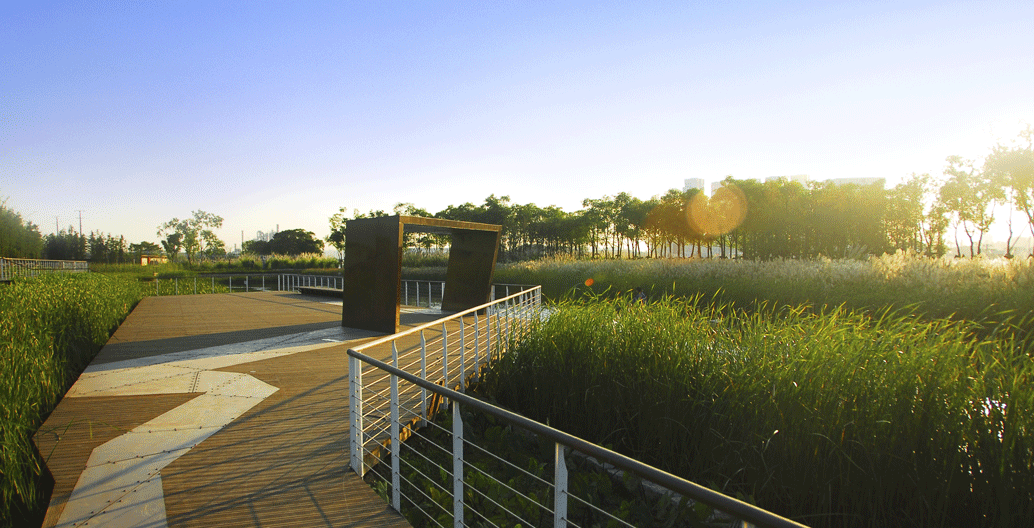
This site had few industrial structures remaining and was largely used as a landfill.
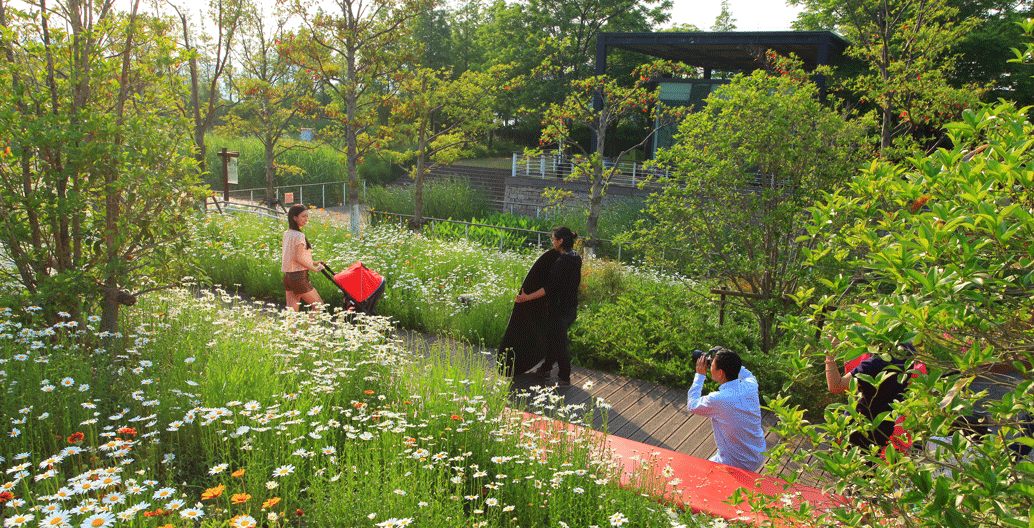
The regenerated site formed the stage for the 2010 Shanghai World Expo.
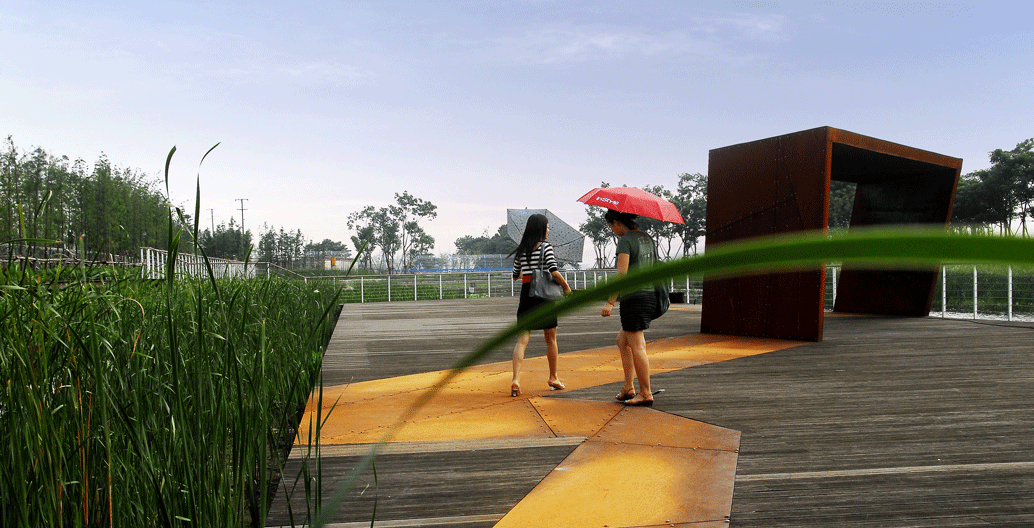
The pedestrian network is composed of a main loop, a series of perpendicular roads bisecting the wetland.
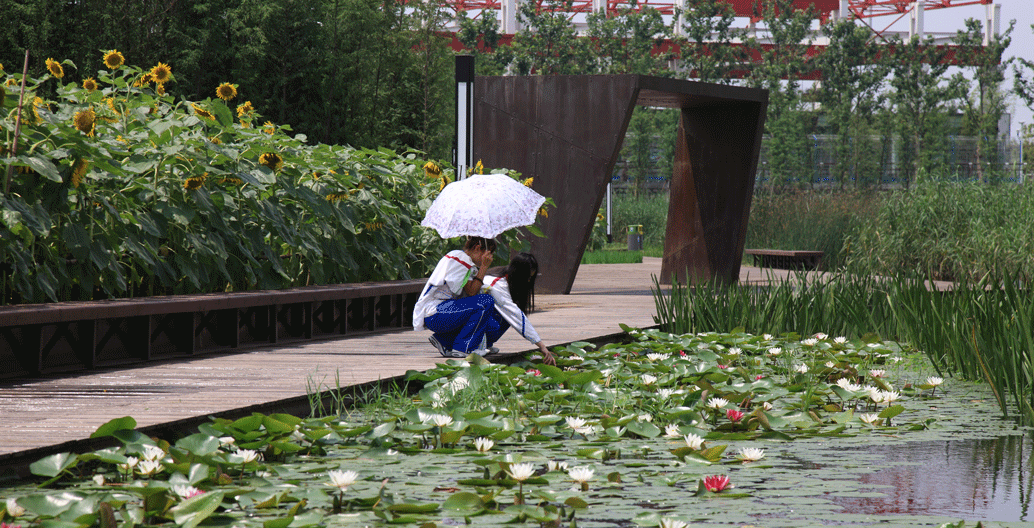
Numerous platforms and enclosed ‘containers’ form nodes of the park's pedestrian network.
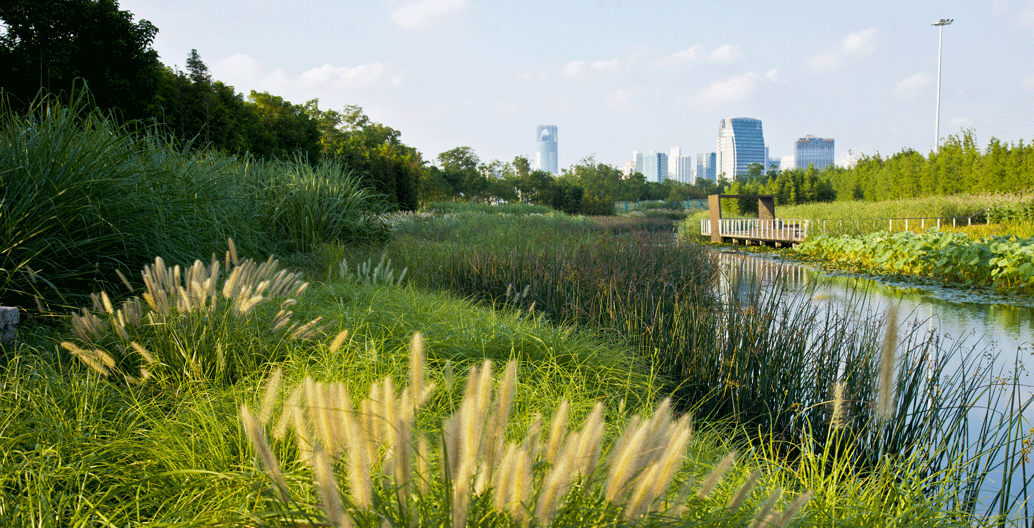
Situated throughout the wetland valley, the folded steel panels were used to frame views of Shanghai’s skyline.
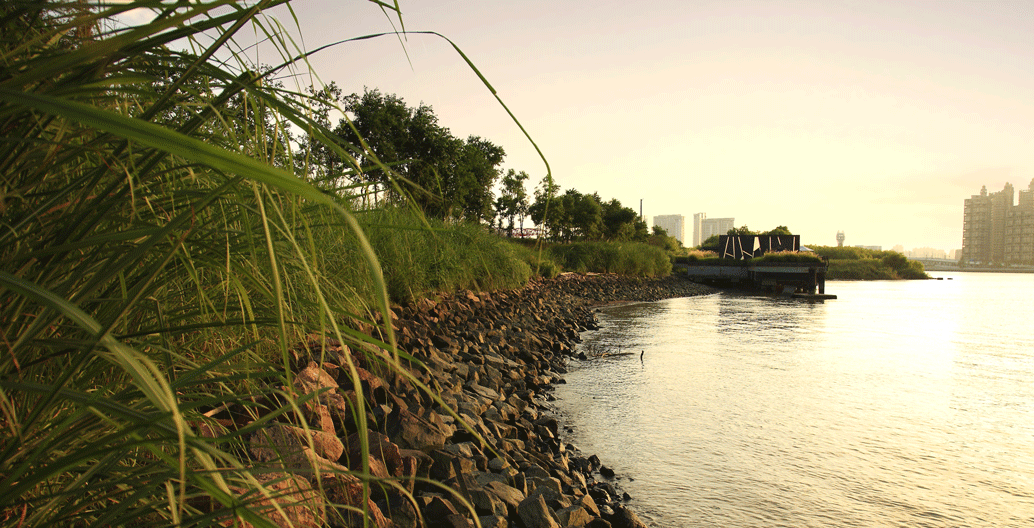
Cascades and terraces are used to oxygenate the nutrient-rich water, and reduce suspended sediments.
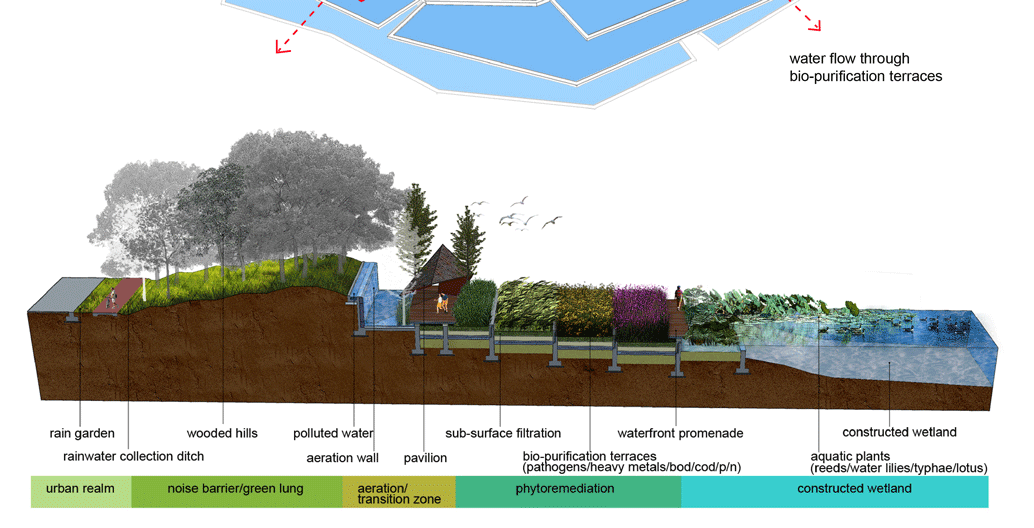
Field testing indicates that 2,400 cubic meters (500,000 gallons) per day of water can be treated from Lower Grade V to Grade III.
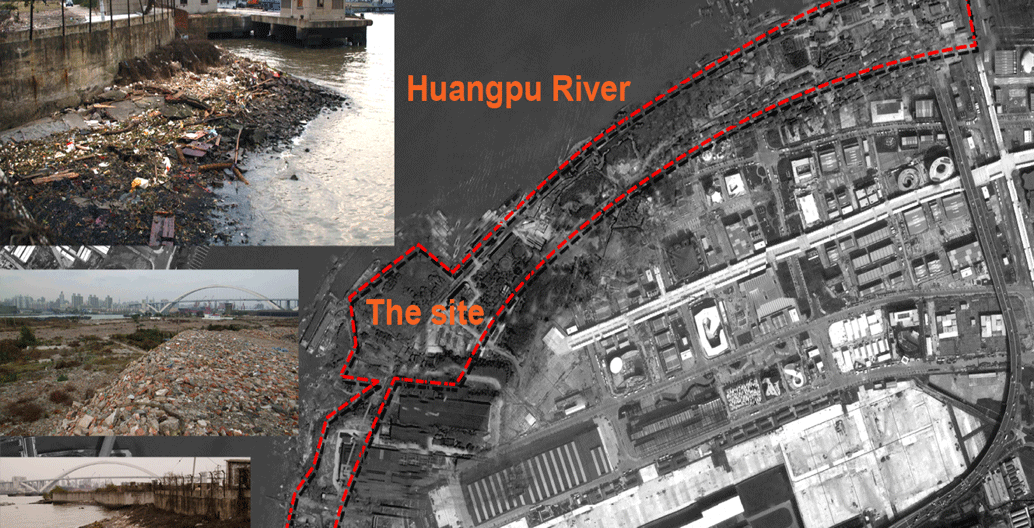
The site before regeneration.
JZ: What are WSUD’s key aims?
TW: The key aims of WSUD are to manage urban water (whether stormwater or wastewater) in a manner that best recognises the resource potential of these different water streams, the potential for their impact in reducing the incidences and severity of floods, their potential to reduce the vulnerability of cities to drought, and more recently, the potential to recover resources from our sewerage, beyond water (e.g. energy and nutrients). The harnessing of these elements is through good urban design and architecture .
We often use the notion that WSUD is the practice and a water sensitive city (or precinct) is the outcome. WSUD is expressed in many different forms, from the green walls of buildings that also cleanse greywater while utilising it as a water source for irrigating the green wall itself; to stormwater treatment along ecological landscapes that form part of the blue and green corridors of a city; the blue/green corridors being corridors for flood detention and safe passage; to the recycling of treated wastewater for non-drinking water uses such as toilet flushing; and to maintain green landscapes in cities while preserving higher quality water for drinking purposes.
Ecological landscapes can promote multiple benefits, create a sense of place and provide important amenity in cities. My key argument here is that spaces in the public domain are essential features of public amenities. However, these urban landscapes must be functional beyond providing spatial amenities. Our knowledge of the traditional values of open spaces and landscape features needs to be bolstered with an understanding of the ecological functioning of the urban landscapes that capture the fundamentals of sustainable water management, microclimate influences, facilitation of carbon sinks and use for food production.
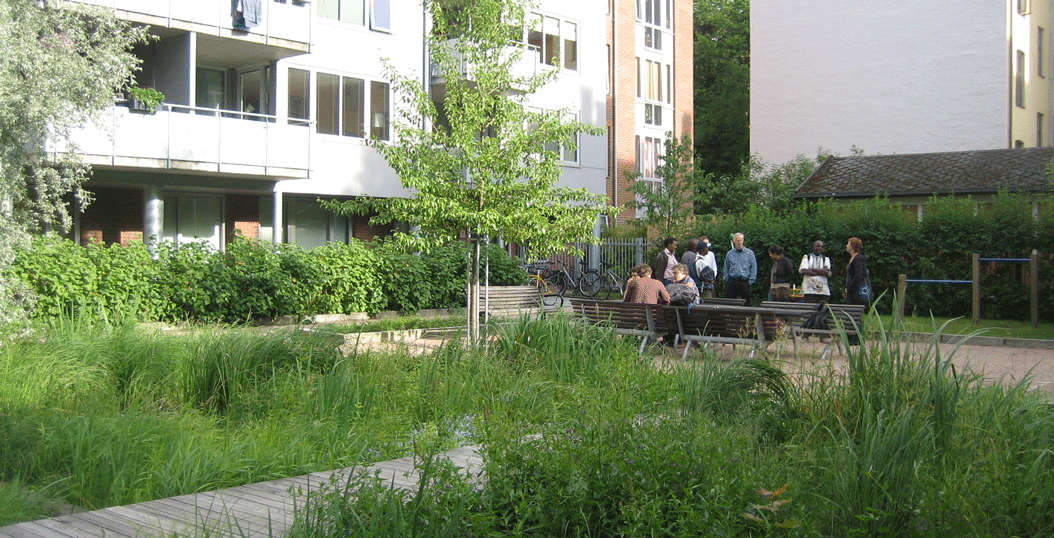
A greywater garden in Oslo, Norway. Image: Susana Secretariat via Flickr
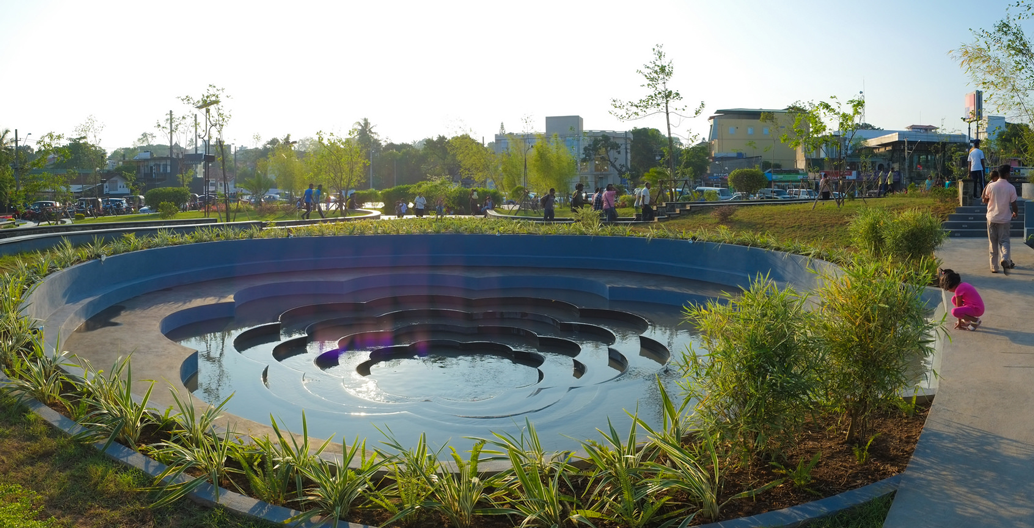
An urban wetlands park in Nugegoda, Sri Lanka. Image: shruthimathews via Flickr
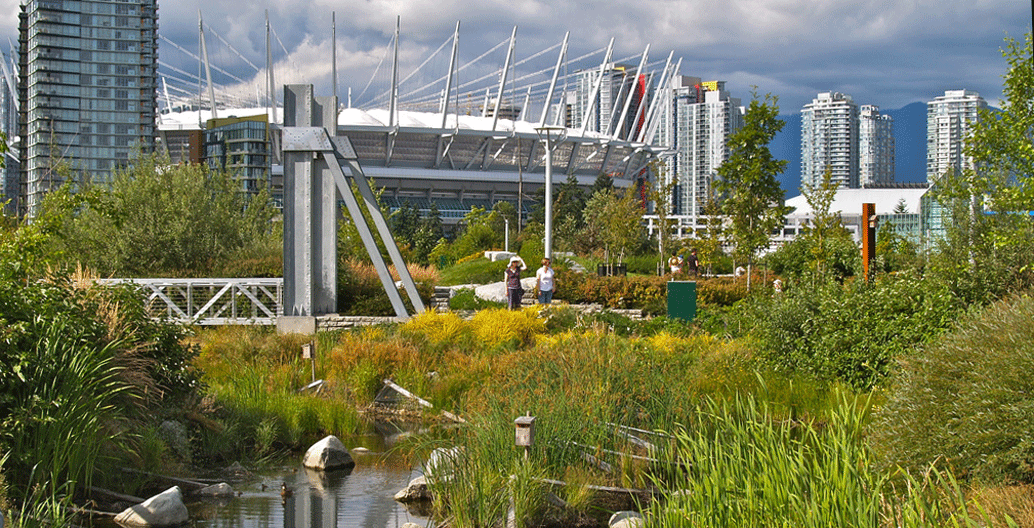
Vancouver's Olympic village for the 2010 games incorporated an urban wetland, flanked by 200 pieces of native vegetation. Image: Jeff Arsenault via Flickr
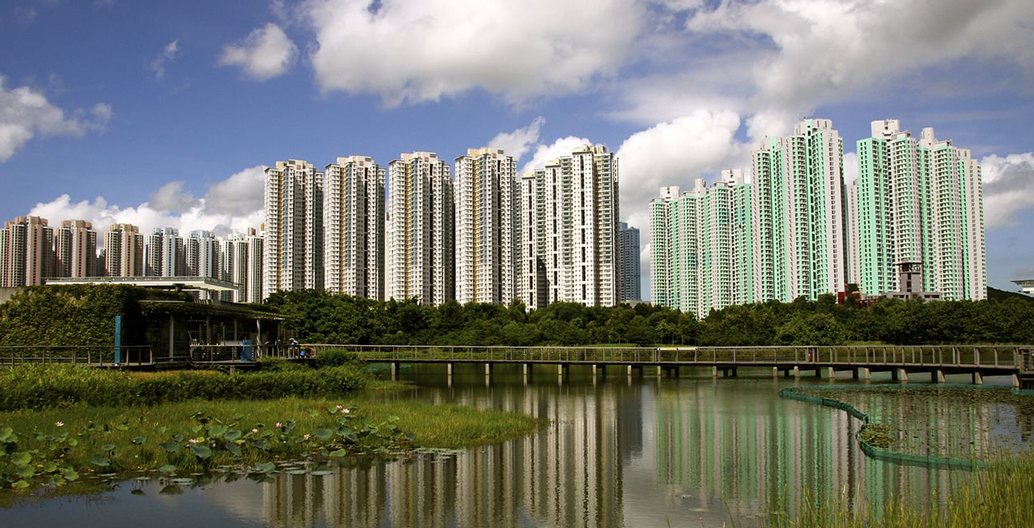
A vision of Hong Kong's 61-hectare wetland park. Image: Matthias Süßen
JZ: Given the need to transition to a post-carbon era, why do governments utilise desalination plants over alternatives such as rainwater, stormwater and wastewater systems to provide a more sustainable water supply?
TW: Many of the decisions to build desalination plants have been made in the midst of crisis. Desalinated water is a reliable source of water but the most expensive among all the possible sources of water – but it provides certainty and in a crisis, governments need the certainty of their decisions. Many of the more sustainable solutions require longer incubation in society because of the diffuse nature of their implementation. The fact that many of the desalination plants in Australia – with the exception of Perth – have come online at a period when dams are filling have certainly taken some of the shine off these projects. Nevertheless these facilities are of strategic importance to the water supply security of many of these cities – they provide an era of stability in terms of water supply security over the next 20 years or so in enabling a greater and more holistic development of water management strategy to secure the sustainability and resilience of these cities. It would be a grave mistake if cities chose not to invest in incubating more sustainable solutions just because they now have a desalination plant. Population growth, increasing water consumption and more severe droughts would mean that there will come a time when we will be faced with the need for building another desalination plant if we do not use the time we have now to develop and implement more sustainable solutions.
JZ: How reliant is WSUD on maintenance? Is this something that clients need to be willing to accept?
TW: WSUD features in the public realm are green infrastructure – the operative word being infrastructure. These assets must be managed as community assets with clearly defined maintenance and operation provisions. We have to look beyond the public realm as simply a place that provides amenity and recreation for local communities. In fact, if we are to get really serious about green infrastructure, we need to clearly articulate from the outset what range of functions we expect from this infrastructure. The detention and safe passage of floodwaters, the cleansing and harvesting of stormwater, support for mitigating urban heat, productive landscapes and maintaining urban biodiversity are just a few of the functions that should be identified and clearly articulated from the beginning. And of equal –if not greater – importance, a whole of government approach combined with a more robust economic valuation framework is essential. With this in place, we can fully recognise all the economic and community benefits that can be achieved from green infrastructure. Then maybe we can say we’re really getting serious about green infrastructure.
––
Professor Tony Wong is Professor of Civil Engineering at Monash University and Chief Executive of the Cooperative Research Centre for Water Sensitive Cities (Australia and Singapore). Professor Wong is internationally recognised for his award-winning urban design projects, research and strategic advice in sustainable urban water management and water sensitive urban design.
Joshua Zeunert is a Landscape Architect and Lecturer at Deakin University. He has worked on a range of significant urban design and landscape architecture projects. This interview is an extract from Landscape Architecture and Sustainability (2017) and is provided courtesy of Bloomsbury Visual Art.


